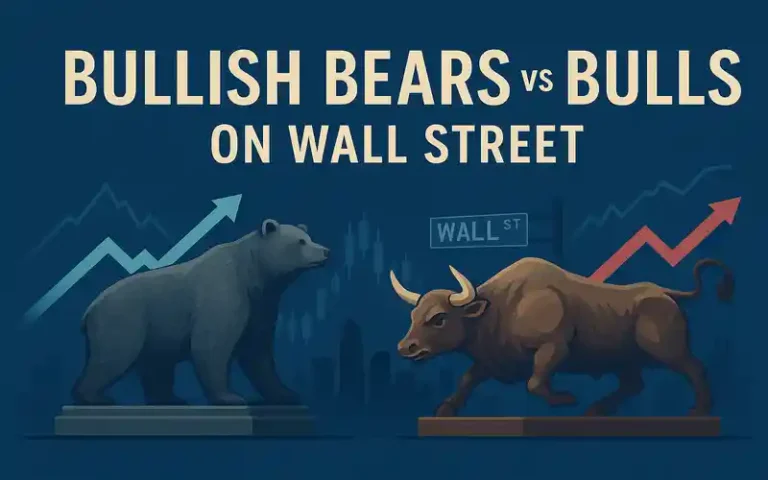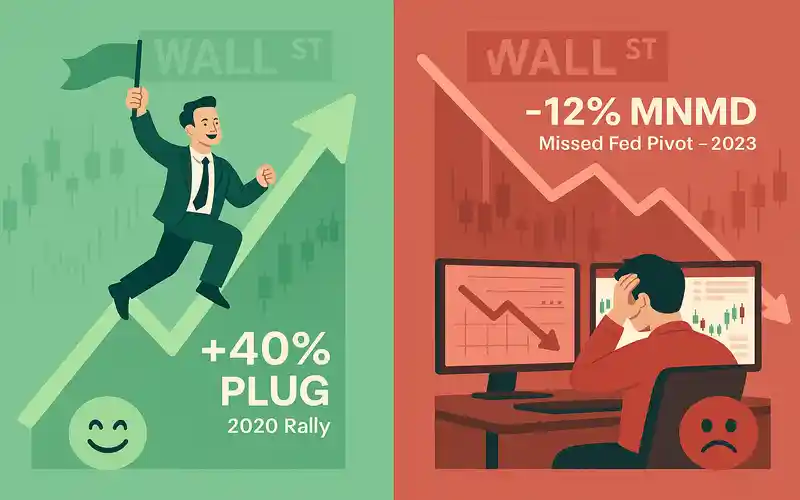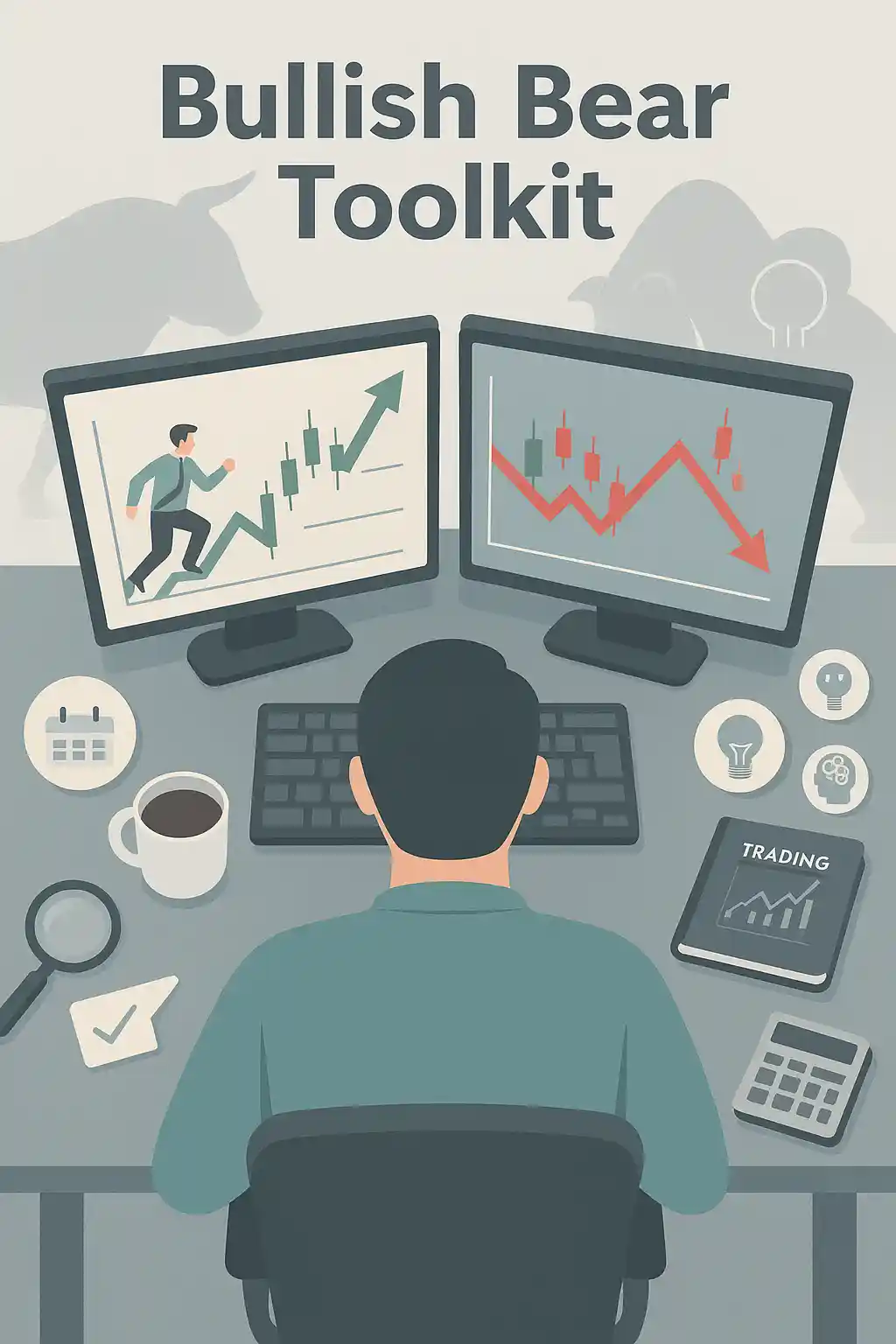
Bullish Bears vs Bulls on Wall Street
“In the short run, the market is a voting machine but in the long run, it is a weighing machine.” — Benjamin Graham
🐂 Summary: Bulls, Bears & the Battle of Wall Street
This blog explores the psychological, strategic, and historical differences between bulls and bears in the market—along with the unique philosophy of the “bullish bear” trader. We’ll break down how each group views risk, volatility, and timing, and what that means for your trading strategy.
📑 Table of Contents
- Introduction: Bullish or Bearish—Who Are You?
- The Philosophy Behind Bulls, Bears & Bullish Bears
- Expert Opinions on Market Mindsets
- Case Studies from Market Highs and Lows
- Pros & Cons of Each Trading Mentality
- Key Takeaways
- FAQ: Bulls vs Bears Explained
- Further Reading & Related Content
🧠 Introduction: Bullish or Bearish—Who Are You?
On Wall Street, the two dominant mentalities are the bulls, who believe the market will rise, and the bears, who expect it to fall. But there’s a third mindset rising—the bullish bear: a realist who trades opportunistically in both directions.
These philosophies don’t just influence how traders buy or sell—they define how they interpret market news, earnings reports, and even global conflict. They also determine your risk tolerance, how you react to volatility, and how you plan for long-term success.
📊 The Philosophy Behind Bulls, Bears & Bullish Bears
Bulls are generally optimistic and momentum-driven. They invest in growth stocks and believe in compounding over time. Classic bull traits include:
- Buying on dips
- Holding through volatility
- Betting on innovation (think NVIDIA’s stock growth)
Bears are contrarians. They spot bubbles and capitalize on corrections. They believe the market often overreacts—and they position themselves accordingly.
Bullish Bears are hybrid thinkers. They understand trend direction like bulls but protect capital like bears. Many short-term traders and swing traders fall into this group, especially those using tools like our swing trading techniques.

🗣️ Expert Opinions on Market Mindsets
We reached out to several financial analysts and educators for insights into these differing philosophies:
“Bullish investors drive long-term trends, but it’s the bears that make traders question their assumptions.”
— Dr. Sheila Marks, Market Psychology Professor at NYU
“The best traders aren’t married to a direction. They’re married to strategy.”
— Alan Murphy, Options Trader & Author of Trading Between the Lines
You can read more about directional risk and behavior-based trading in our blog on bull and bear spreads.
📚 Case Studies from Market Highs and Lows
Let’s explore two key moments in recent market history that illustrate how bulls, bears, and bullish bears approached the same events with different mindsets:
✅ Bullish View: COVID Recovery Rally (2020–2021)
After the March 2020 crash, bulls loaded up on tech and recovery stocks like AMZN, AAPL, and NVDA. Within months, the S&P 500 hit new all-time highs. Those who held during fear and bought the dip saw incredible returns of 30–100% in under a year.
Many traders following alerts or momentum setups like swing trading alerts benefited by re-entering on trend reversals.
❌ Bearish Miss: Underestimating the Fed’s Pivot (2023)
In early 2023, bears expected inflation and interest rate hikes to keep suppressing equities. But when the Fed signaled a pause, the markets surged. Some bearish traders stayed short too long and got squeezed.
The smart “bullish bears” recognized the shift and hedged long using tools like covered calls or mixed exposure in sectors with rebound potential.

⚖️ Pros & Cons of Each Trading Mentality
Here’s how each market mindset plays out depending on strategy and conditions:
| ✅ Bullish Bears | ❌ Pure Bulls or Bears |
|---|---|
| ✔ Flexible in both up and down markets | ✖ Can get stuck in one mindset too long |
| ✔ Hedged strategies help minimize risk | ✖ Risk of overconfidence or bias |
| ✔ Ideal for swing traders and fast movers | ✖ Poor performance during reversals |
| ✔ Helps react to news events and pivots | ✖ Slower to adjust to trend changes |
📌 Key Takeaways
- Bulls thrive in uptrends, bears thrive during pullbacks—but bullish bears aim to adapt.
- Understanding sentiment and market cycles is key to avoiding false entries.
- Alerts and tools like day trading strategies can help you act, not react.
- Your edge is mindset + method—not just prediction.
❓ FAQ: Bulls, Bears & Bullish Bears
Q1: What’s the difference between a bull and a bullish bear?
A bull believes markets will rise and often stays long-term invested. A bullish bear may agree short term but trades with caution, using hedges and stop-losses.
Q2: Are bearish traders always pessimistic?
Not always. Many bearish traders are cautious optimists—they use downturns to short, hedge, or accumulate at value prices. Learn how trading styles influence timing.
Q3: Can bullish bears be profitable in both market directions?
Yes. Their flexibility is what gives them an edge. Many use stock ownership mindset while still executing tactical trades.
Q4: Is one mindset better than another?
It depends on your risk tolerance, timeframe, and strategy. Bulls perform well in uptrends, bears in corrections, and bullish bears in transitional phases.

📚 Further Reading & Related Content
- Bullish Bears vs Bulls (Original Summary)
- Stock Market Training Courses
- Common vs Preferred Stocks
- Understanding Stock Value
🌐 External Expert Resources
🐂 What is a Bull Market? – Investopedia
Defines the psychology and behavior of bullish markets and how investors can position themselves.
🐻 Surviving Bear Markets – CNBC
Strategies for long-term investors to survive or profit during major downturns.
🧠 Market Psychology & Herd Behavior – Forbes
Explore how emotional thinking drives both bull and bear markets, and how to navigate them with logic.
📉 Bear Markets Explained – Motley Fool
Historical bear markets and what traders learned from their recoveries.
🎯 The Trading Mindset – HBR
Focuses on how professionals shift between bullish and bearish behaviors in real-world scenarios.
📈 What Is a Bull Market? – Investopedia
Explore the key traits of a bull market and how investor psychology impacts price movement and trading behavior.
🐻 How to Survive a Bear Market – CNBC
CNBC offers tips for navigating bear markets and outlines strategies for long-term investing during corrections.
🧠 Market Psychology: How Emotions Move Stocks – Forbes
Understand the emotional cycles that fuel bull and bear markets and how to control your bias while trading.
📉 Bear Markets Explained – Motley Fool
The Fool walks through bear market history and what investors can learn from crashes and rebounds.
🧩 The Trading Mindset – Harvard Business Review
HBR discusses how successful traders shift between bullish and bearish mentalities in real-time market conditions.